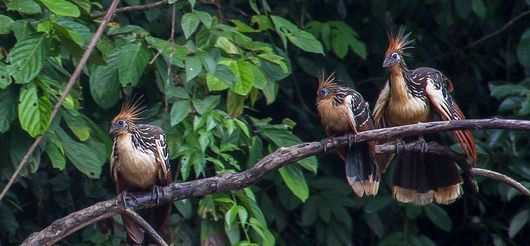Evaluating Protected Area Management Planning: A case study of British Columbia’s Protected Areas Master Planning Process
18 December 2019
18 December 2019
This study provides a framework for evaluating protected area planning processes based on best practices criteria. The 35 criteria are divided into three categories: process (13 criteria), outcome (9 criteria), and implementation (13 criteria). The methodology is illustrated by a case study evaluation of the protected area planning process in...
The Problem of Overlap: The Panamanian Government Stalls on Indigenous Land Titling on Protected Areas
18 December 2019
18 December 2019
Panama is home to five indigenous semi-autonomous indigenous territories (comarcas) and several protected areas, including the Darién National Park. However, the government has yet to recognize a number of the customary lands of the Bri Bri, Embera, Guna, Naso, and Wounaan peoples, because of their location in, or proximity to,...
In the Amazon rainforest, Brazil's rubber tappers were the first social group to challenge the predatory development model that is threatening ecological disaster in this country. Their strategy to set up “extractive reserves”—conservation areas where the local population can harvest non-timber forest products—is examined in this article.
Indigenous peoples and protected area management
18 December 2019
18 December 2019
This bulleting review a number of principles that have been adopted by different conservation organizations and can serve as a guide to achieve a full and effective participation of indigenous and local communities in the management of protected areas and the establishment of new areas in full compliance with their...
Relationship between Protected Areas and Sustainable Forest Management: Where are we heading?
18 December 2019
18 December 2019
The relationship between protected areas and forest management has been one that has often been fraught with conflict. This paper provides a brief outline of the Canadian situation with respect to protected areas and forest management. It does so by first offering a brief history of the relationship between protected...
Protected areas in Chile: are we managing them?
18 December 2019
18 December 2019
This study reviews the Chilean protected areas that have been created to date, with an emphasis on the existence and effectiveness of management plans for all terrestrial and marine protected areas. Effectiveness was individually evaluated using two filters: 1) the age of the management plan and 2) the first four...
Indigenous Peoples and the Manu National Park (Peru)
18 December 2019
18 December 2019
The Manu National Park is considered one of the most biodiverse areas of Peru and the world. Its conservation and protection, is a priority for the Peruvian National Park System. Indigenous Peoples belonging to the Yora, Mashko-Piro, Matsiguenka, Harakmbut, Wachipaeri and Yine ethnic groups are present in the area at...
Indigenous Peoples in Protected Areas in Indonesia: The case of Gunung Halimun Salak National Park
18 December 2019
18 December 2019
For the Kasepuhan, the forest is a way of life. Living in Java, Indonesia, the Kasepuhan rely on their lands for food, shelter, medicine, and income. Yet like the vast majority of Indigenous Peoples and local communities, the Kasepuhan—who have lived in the Lebak district since the 17th century—had no...
A socio-economic evaluation of a protected area - A case study: Hamadan Province, Iran
18 December 2019
18 December 2019
This study aims to investigate the socioeconomic issues of a protected area and determine the income as well as participation of the local stakeholders in conservation. It was conducted at seven villages in Hamedan province in the midwest part of Iran. The results may help the conservation and maintenance of...
Evaluating the Management Effectiveness of Five Protected Areas in Taiwan using WWF’s RAPPAM.
18 December 2019
18 December 2019
This study adopts the WWF Rapid assessment and prioritization of protected areas management methodology (RAPPAM), the most popularly used method for present site-level evaluation and for possible system-level evaluation in the future, to evaluate the management effectiveness of five protected areas in Taiwan. In addition, the authors adjusted the RAPPAM...

